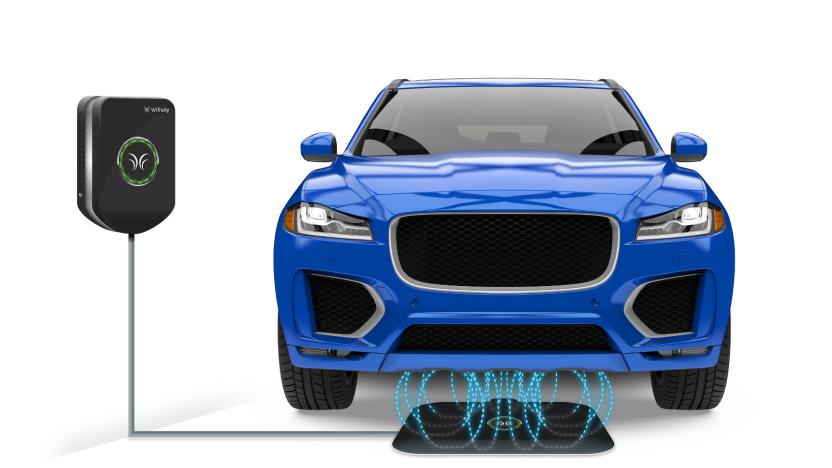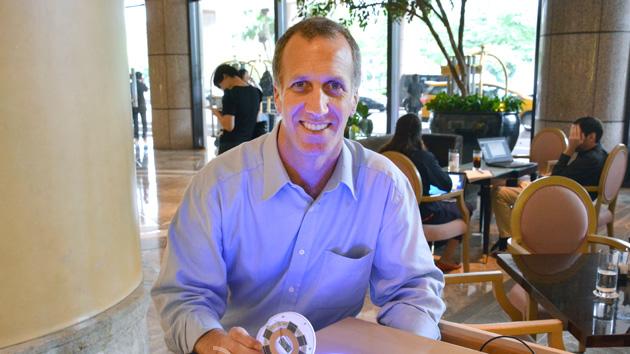witricity
Latest

We're one step closer to unified wireless charging standard for EVs
WiTricity, a company that specializes in contactless EV charging, has acquired Qualcomm's rival wireless charging tech. The two are keeping quiet about the financial details, though they did reveal that Qualcomm will become a minority WiTricity shareholder as a result of the transaction. Ultimately, it gives WiTricity access to more than 1,500 new wireless battery charging patents and patent applications, which could see its contactless charging system become the EV industry standard.
Saqib Shah02.11.2019
Recharging your electric car could be as simple as parking
WiTricity, one of the leaders in contactless, wireless charging is working with General Motors. The new partnership will, you guessed it, involve wirelessly charging electric vehicles. WiTricity's prototype Drive 11 park and charge system works at both 7.7 kW and 11 kW systems and could even be installed under a substrate to offer cord-free power for public parking spaces.
Timothy J. Seppala12.21.2016
CES 2015: The home of the future, available today
We've been hearing about the promise of the connected home, or the "Internet of Things," for years. At this CES, one thing became clear: The connected home of the future is achievable today. Qualcomm's smart home, for example, was a mock-up showing how tech could change the way we live. Unlike past years, however, the vast majority of "things" on show were off-the-shelf products you could buy and install in your apartment right now.
Aaron Souppouris01.11.2015
WiTricity's CEO paints a picture of a wirelessly powered future
If WiTricity CEO Alex Gruzen gets his way, the company's tech will soon wind up in your phone, your car and even inside your body. That's because the Massachusetts-based company deals in magnetic resonance technology, and if those words don't mean anything to you now, they probably will before long. You see, WiTricity has been working for the past five years on a way to wirelessly transfer power between devices, and Gruzen told our audience at Engadget Expand NY that the wireless future is basically right around the corner.
Chris Velazco11.07.2014
Five questions for the man making contactless wireless power a reality
With wireless power demos and proposals going as far back as 2006, what's taking so long? And, most importantly, is it safe? At Engadget Expand, we'll be addressing these questions with WiTricity CEO Alex Gruzen, who will also share his thoughts on the industry.
Richard Lai11.06.2014
More to expect at our free Engadget Expand event in NYC!
If you're keeping score, we've announced a bunch of great speakers heading to this year's Engadget Expand (such as RJD2 and the head of DARPA, Arati Prabhakar). Of course there's plenty more where that came from and we're excited to announce what else you'll see at the Javits Center on November 7-8 in New York City!
John Colucci09.30.2014
Intel's cable-free future will use WiTricity's advanced wireless charging
WiTricity will be implementing its resonance-based charging technology onto future Intel-powered devices, as according to the Rezence specification. Conveniently, WiTricity's newly appointed CEO, Alex Gruzen, is a veteran in the laptop industry.
Richard Lai06.11.2014
WiTriCity hopes to entice wireless charging partners with iPhone 5/5s reference design
Even though Rezence is poised to become a wireless charging competitor to Qi, it isn't the only rival in town. WiTriCity has been in the cordless electricity biz since at least 2007 -- having partnered up with Toyota for charging its cars for example -- but hasn't really made a real consumer play for handheld devices just yet. That changes today, however, with the company's first reference design that pairs an iPhone 5/5s sleeve with a wireless charging pad. Like Rezence, WiTriCity uses magnetic resonance to charge compatible electronics, which means the pad can be installed underneath tables or other surfaces and the phone can still be refueled no matter where you place it. Of course, the sleeve is just a proof-of-concept and is not meant for sale, but WiTriCity hopes that this idea will prompt manufacturers to leap to its side. Whether or not this will compete against the likes of Powermats however, remains to be seen.
Nicole Lee01.07.2014
Mitsubishi Concept CA-MiEV triples the i-MIEV's range, adds wireless charging
Mitsubishi's i-MiEV is known for many accomplishments in the electric car world, but long-range driving and staggeringly good looks aren't among them. Its just-unveiled Concept CA-MiEV solves the former by making at least a token gesture towards the latter. The combination of flat-packed, high-density 28kWh lithium-ion batteries and a sleeker, low-drag shape help the compact car last for 186 miles on a charge, or exactly three times what the i-MiEV could muster. It's enough that Mitsubishi describes the concept as a "suburban" EV that could last for a week of typical European commuting on one charge. As it's a showfloor darling, the Concept CA-MiEV naturally stuffs in a lot of technology that's only sometimes related to the battery: it can charge wirelessly using WiTricity's magnetic resonance, takes data from smartphones and will email the owner if it's stolen. Mitsubishi is quick to warn that the car isn't intended for production, like most concepts, but many of the developments found inside should spread to the automaker's worldwide fleet in the long run.
Jon Fingas03.06.2013
Live from the Engadget CES Stage: an interview with WiTricity's Eric Giler (update: video embedded)
Here's an exciting one for all of you wireless charging nerds. We've got the Eric Giler, the CEO of WiTricity on-stage to discuss the future of over-the-air electricity. January 11, 2013 12:30 PM EST Check out our full CES 2013 stage schedule here! Update: video embedded
Brian Heater01.11.2013
Scientists tweak wireless power transfer, Tesla nods happily in his grave
Wireless charging may be all the rage these days, but actually beaming electricity -- as sketched above by the man Tesla himself -- still has some snags. North Carolina State U researchers have found a way to possibly vanquish the biggest problem: the difficulty of exactly matching resonant frequencies to amplify current. If external factors like temperature change the tuning of a transmitter even slightly then power drops will occur, but circuitry developed by the NC State scientists would allow receivers to detect these changes and automatically re-tune themselves to match. This could make for more potent car and device charging in the future and, if they stretch the distances a bit, maybe we'll finally get the wire-free utopia Nikola dreamed up 120 years ago.
Steve Dent05.16.2012
Patent suggest link between Apple's wireless charging and WiTricity
Along with several rumors that seemed far-fetched, the Wall Street Journal reported last week that Apple is looking at a new charging capability for the 2012 iPhone -- most likely wireless. Now an international patent filing by Apple seems to be linking the company to 2007 startup WiTricity, a group that is working on extending inductive charging to a distance of several meters. HP's Palm Pre uses wireless inductive charging, but requires that the device be in physical contact with the charging "Touchstone." Apple's patent filing, which was first published in May, describes a situation where an iMac is used to create a charging zone. Any device, whether it be a mouse, a keyboard, an iPhone or an iPad, is charged simply by being within 1 meter of the computer. The link between Apple and WiTricity comes from a reference in the patent filing to the original paper published by MIT researchers which is the basis of WiTricity's technology. For a look at a demo of the WiTricity wireless power capabilities in action (including an iPhone powered by the company's technology), check out the video below from the 2009 TED conference.
Steve Sande07.11.2011
Toyota and WiTricity team up for OTA car charging
Some day you'll charge everything wirelessly -- phones, cars, graphing calculators, all using the same basic technology. That's the sort of utopian vision Toyota had in mind when it formed the Wireless Battery-charging Alliance with WiTricity. The young Massachusetts-based company is pushing "resonance" technology, which charges electronics without contact and is supposedly more efficient than induction-based charging -- a category that includes the popular Qi standard. This new partnership ups the ante, adding electric vehicles to the list of chargeable devices, a vision of the future where Prius batteries can be filled wirelessly, while sitting in driveways and parking garages. Exxon's engineers are no doubt working to perfect the hose-free gasoline transfer as we speak. PR after the break. [Thanks, Paul]
Brian Heater04.28.2011
Video: WiTricity is back, promises wireless power within 18 months
What started out as an MIT project two years ago has now progressed into a full-fledged company -- ladies and gentlemen, meet WiTricity Corp. Auntie Beeb (that's the BBC for you Yanks) has grabbed the firm's CEO Eric Giler to discuss some pretty aggressive plans for bringing wireless power to the masses. Yes, we're talking actual through-the-air wireless as opposed to something like Palm's Touchstone, which requires physical contact between charger and chargee. Based on magnetic induction, the magical technology is apparently mature enough to be deployed in the relatively near future, and if all goes to plan, "near future" could translate into "18 months from now." Also of note, Intel is hard at work developing the original concept, and if the parallel engineering of the same idea by two companies isn't enough to get your skepticism dialed down and your browser to the video past the break, what is?
Vlad Savov07.24.2009
MIT's wireless electricity demoed, dubbed WiTricity
We always knew Tesla was right: MIT physics professor Marin Soljacic and his team of researchers behind the latest wireless electricity scheme have reportedly demoed their magnetically coupled resonator technology on a 60-watt lightbulb that wasn't plugged in. Of course, no technology should be without a name, and so they've dubbed it WiTricity. Apparently Soljacic thinks it's possible to commercialize WiTricity within the next few years, which would be totally amazing if it was powered by Steorn's humanity-saving infinite energy device. [Warning: subscription req'd for link]
Ryan Block06.07.2007